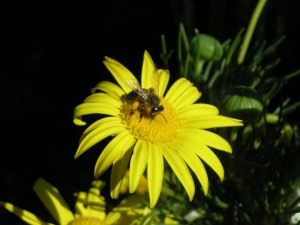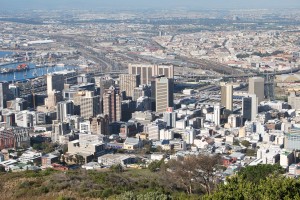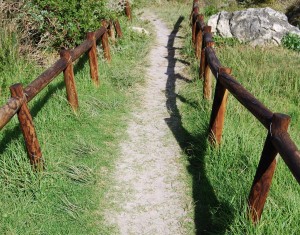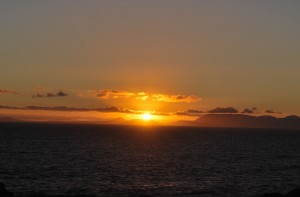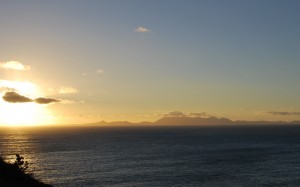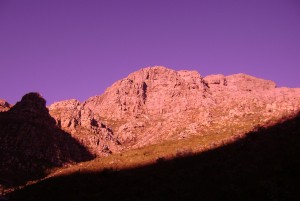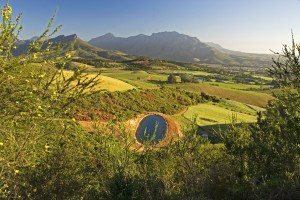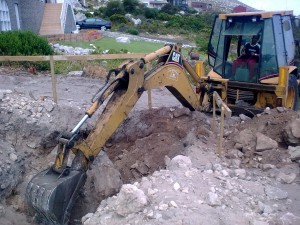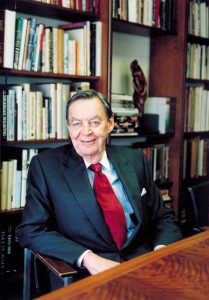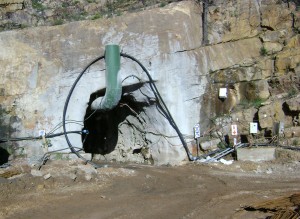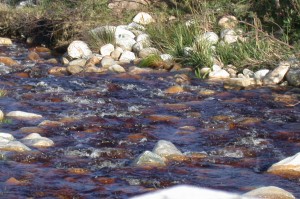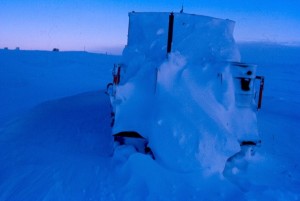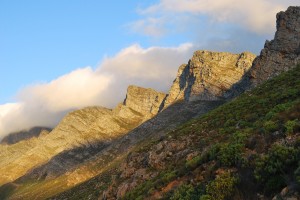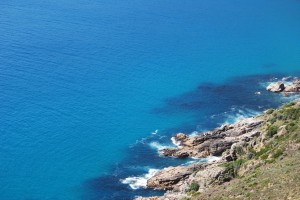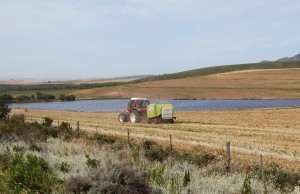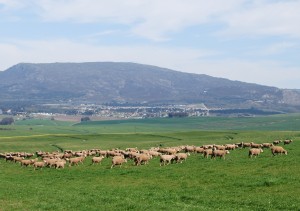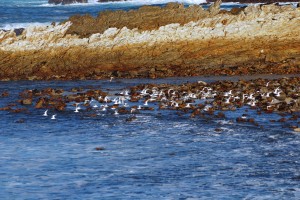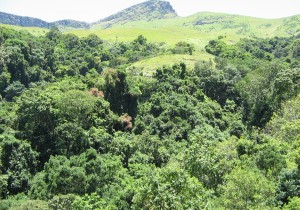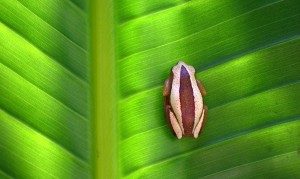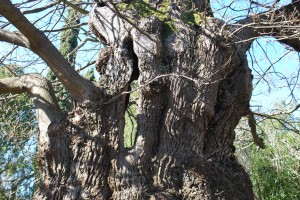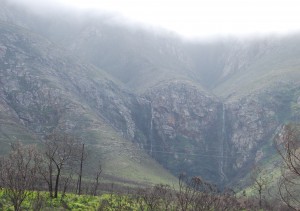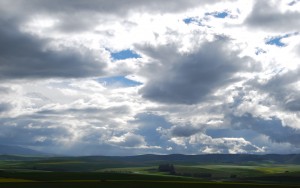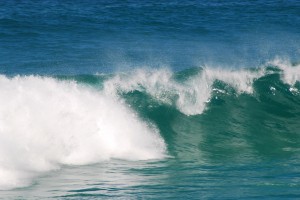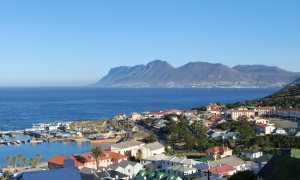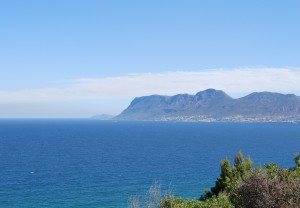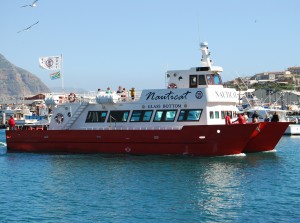CHAPTER < TEN - RENEGOTIATING HUMAN DESTINY CONTD.
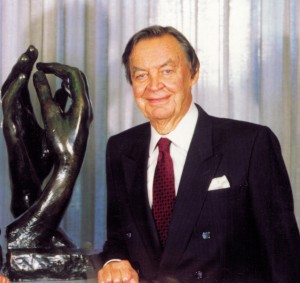 Each of us has the capacity to be different people in different situations, trying out a new identity when our previous one no longer fits.
Each of us has the capacity to be different people in different situations, trying out a new identity when our previous one no longer fits.
Woman of the Mists
An outstanding example of one woman’s ability to grasp life with both hands, dramatically altering her circumstances and re-creating her life when she felt the call to change, was Dian Fossey, champion of the rare and elusive Virunga mountain gorillas. Prior to the age of 34, the age at which she decided to roll the dice of her life and see what came of it, there had been nothing exceptional about Dian Fossey except her unusual height and her dark-haired good looks. Complex, uncompromising and austere, Dian was also a woman of great intensity, charisma and tenderness.
At the time she made the decision that would forever change her life she was unmarried, living quietly and alone in the town of Louisville, Kentucky, USA. By answering the call to instinct she swapped her life’s vocation in one dramatic stroke, from working as an unknown occupational therapist at the Kosair Crippled Children’s Hospital in Louisville, to becoming a world-renowned conservationist. And in doing so she replaced the care of neglected and handicapped children with the care of a remote species of mountain gorillas, eventually founding the Karisoke Centre for Mountain Gorilla Research in Rwanda.
Unaware that the course of her life was about to be so dramatically redirected, on a Sunday evening in March 1966 Dian attended a lecture at Louisville University by Louis Leakey, one of the world’s most eminent palaeontologists at that time. She listened transfixed to what Dr Leakey had to say and after the lecture she waited to meet him so that she could speak to him personally. He told Dian that he needed someone to go and study the endangered mountain gorilla population in the Virunga mountain region of central Africa. The only proviso was that this person should have their appendix removed before the expedition, as there was little or no medical care in the area to treat such emergencies.
It was on the basis of this short fateful meeting, after having decided that she had nothing to lose, that Dian made up her mind to travel to Africa becoming in the process, along with Jane Goodall who studied chimpanzees and Birute Galdikas who studied orang-utans, one of Louis Leakey’s “ape ladies”. It was a decision that was to have far-reaching consequences for her and many others.
Dian Fossey had no formal training in zoology or anthropology. However, on 15 December 1966 after having had her appendix removed as a precautionary measure, she left the United States for Africa. It felt to her as if she had been waiting for this opportunity her whole life. At long last she was on her way to becoming Nyirmachabelli, “the woman who lives alone on the mountain” as the local people called her. Her intention was to stay for a period of no more than 24 months however, all in all, her stay on the Virunga mountain slopes ended up stretching to a total of 18 years.
Dian’s life in the Virungas was not idyllic by any means. Every day, in her bid to track and follow the elusive mountain gorillas, she braved cold, rain and fog. Thick mud clung to her legs, reaching up to her thighs as she clambered up steep hillsides and slid down deep ravines covered with wet vegetation. Her clothing was soaked most of the time and along with her tent, it seldom dried out in the dark misty atmosphere of the mountain rain forest that had become her home. Consequently she suffered recurring bouts of pneumonia. She also suffered malnutrition from an inadequate diet, subsisting on potatoes when money ran short.
Because of a marked lack of interest in her own physical well being her teeth went bad and she neglected to wash for days at a time. She also smoked too much, her excessive smoking eventually leading to emphysema, which prevented her from following her gorilla friends as they moved about their mountain rainforest habitat. Cut off from the world and constantly harassed by poachers and government officials she suffered danger, fear and isolation on the remote mountaintop. She also suffered unbearable heartache when she found some of her most beloved gorillas tragically butchered; their heads and hands hacked from their lifeless corpses.
Dian’s reward for the extreme physical and psychological hardships that she endured for all those years on the steep green slopes of the Virunga volcano was the remarkable closeness that developed between her and what she considered to be “her” gorillas. After many long lonely hours spent earning their trust she became the first human being ever to be touched by a gorilla, that first tentative touch eventually leading to a unique shared intimacy between her and her gorilla family.
From the night before her 35th birthday, which was the first night she spent on the mountain until her untimely death at the age of 53 from a savagely brutal panga attack, Dian’s sole purpose in life was to research and protect the endangered mountain gorilla population. Although at times her methods were questionable and even cruel, especially to the poachers who threatened her beloved gorillas, it was a mission that she undertook with a fierce and single-minded determination.
At the roll of a dice with her spontaneous decision to go to Africa and dedicate herself to the preservation of another species, Dian changed her life from an ordinary suburban existence on one continent to becoming an extraordinary mountain woman on another continent. However, in the process she gave up the life she had spent years carefully building, radically changing her profession as well as her focus and goals. She gave up the possibility of ever marrying and having children. She also risked academic ignominy and endangered her life and her health. And yet, despite all this, Dian Fossey succeeded in establishing an important conservation legacy, one that continues to this day, becoming along the way the exceptional woman who will always be associated with gorilla conservation. As with all great episodes of change the transition was not easy. But it was possible.
So it is with great bodies of people. There are times when, as if plugged into a single vast consciousness, we are able collectively and spontaneously to change our direction and reorder our priorities in response to a pressing need. And often it is during these rallying times, when things are going wrong, that our best attributes as human beings come to the fore. For it is during these times when working together as one, that our self-interest and competitiveness are buried in the goal of the common good. At the very least we have the capacity both individually and collectively to start afresh; getting rid of an unsatisfactory past and starting over again with all the anticipation, high hopes and new resolutions that a fresh start always brings. It is an impulse that is entirely in line with our deep human need to renew and restore…
The Environmental Era
In his groundbreaking book Future Shock author Alvin Toffler wrote: “The acceleration of change in our time is, itself, an elemental force. This accelerative thrust has personal and psychological, as well as sociological, consequences.”
From the second half of the 20th Century, up to and including the 1990s, the period marked a momentous tide of change in the affairs of humanity. And in line with the sometimes-devastating turbulence that a state of change can bring, this tide of transformation resulted in a wide array of discomforting manifestations at global, national and personal levels. Some of these manifestations have continued into the 21st Century, resulting in shifting socio-political playing fields; rapidly fluctuating emotional climates; changing financial imperatives; widespread conflict, violence and dissention; increasing individualism manifesting in changing perceptions and expectations; altering gender-based needs often resulting in alienation between men and women; as well as shifting power bases over a broad spectrum of societal institutions, to name just a few.
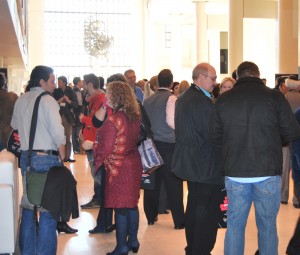 At every level of human interaction there has been increased complexity with an inherent possibility for misunderstanding. Add to the turmoil never-before-equalled media immediacy with its “Big Brother” intrusion and sensory overload, information and technology advancement that has come close to the speed of sound and increased environmental fragility, and it’s no wonder that there has been such upheaval in the affairs of humankind.
At every level of human interaction there has been increased complexity with an inherent possibility for misunderstanding. Add to the turmoil never-before-equalled media immediacy with its “Big Brother” intrusion and sensory overload, information and technology advancement that has come close to the speed of sound and increased environmental fragility, and it’s no wonder that there has been such upheaval in the affairs of humankind.
The progress of the latter part of the 20th Century was paid for with unprecedented stress and strife. However, overlaying the psychological and sociological tumult and accelerating towards its end, a profound change in human consciousness had begun to emerge. Perhaps as a reaction to the materialistic mentality that characterised the Economic Era of the second half of the 20th Century: a mentality that emphasised forging ahead regardless of the consequences, taking whatever was needed from whatever quarter and throwing away what we liked, where we liked, a new global mindset had begun to take shape and gather momentum. It was the beginning of what has been termed the Environmental Era. And in global survival terms the emergence of this profound ideological shift had come not a moment too soon.
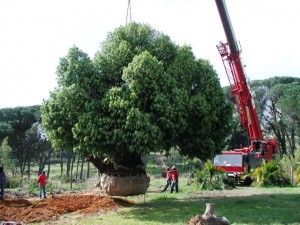 From an individual perspective the new paradigm of the Environmental Era has been a redefinition of personal growth. In direct contrast to the rampant consumerism of the Economic Era with its emphasis on forced consumption, which embraced having as a means of spiritual satisfaction, the Environmental Era has swung toward a personal ethos of being and thinking and doing and giving.
From an individual perspective the new paradigm of the Environmental Era has been a redefinition of personal growth. In direct contrast to the rampant consumerism of the Economic Era with its emphasis on forced consumption, which embraced having as a means of spiritual satisfaction, the Environmental Era has swung toward a personal ethos of being and thinking and doing and giving.
This new ideology of the new millennium stresses health, safety, altruism, co-operation and preservation of the environment together with other living things, taking a longer and more holistic view of life.
It is concerned less with me-ism and more with us-ism and this has led to people all over the world seeking greater purpose in their lives. This response to the deep emerging need to feel that their lives matter and that they can make a difference, has led to an exciting new work ethic as a metaphor for what is happening in human affairs around the globe.
The yuppie self-centredness of the past that stressed power dressing and boardroom power plays in a bid to secure the biggest salary, the best perks and the largest slice of the available corporate power pie possible, has been replaced with a new definition of personal advancement. Greed is definitely out.
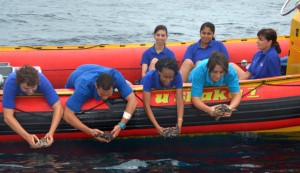 And instead of work that is high status and highly paid but inherently value violating, more and more people are seeking work that is value defending, in this way, marrying the need to earn a living with other values that are just as important: values such as achieving a meaningful quality-of-life, fulfilling true potential and raising families with as much personal involvement as possible.
And instead of work that is high status and highly paid but inherently value violating, more and more people are seeking work that is value defending, in this way, marrying the need to earn a living with other values that are just as important: values such as achieving a meaningful quality-of-life, fulfilling true potential and raising families with as much personal involvement as possible.
In a sense many of us have become more family-centred and less money and status orientated, and as a way of optimising our time and family commitment, an increasing number of us have set up offices in our homes. This swing in values has been rewarded with a greater sense of significance as we do work and live lives that we feel matter more in the greater scheme of things…
